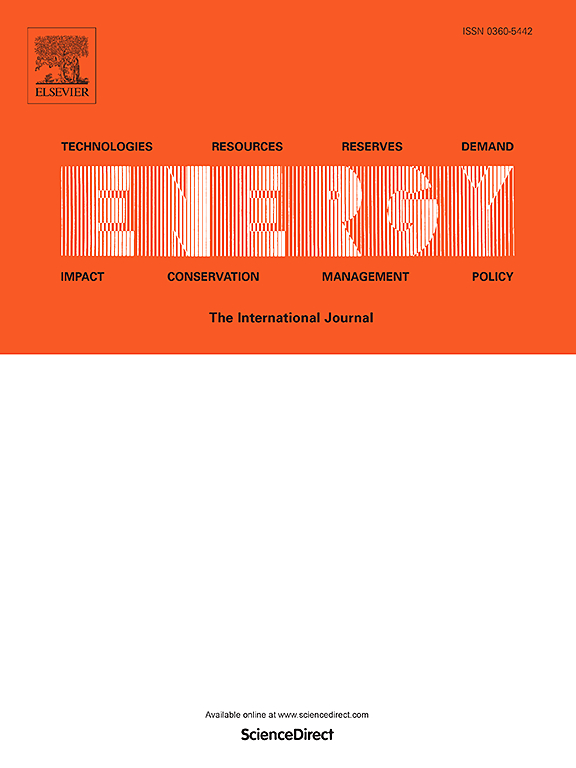Impact of atmospheric stability on wind farm performance: Insights from internal boundary layer dynamics
IF 9
1区 工程技术
Q1 ENERGY & FUELS
引用次数: 0
Abstract
The flow characteristics of the atmospheric boundary layer (ABL) and its interactions with wind farms are critical to assessing the aerodynamic performance of wind turbines. In this study, large eddy simulation (LES) was employed to investigate these interactions across different atmospheric stratifications, with a particular focus on the evolution of the internal boundary layer (IBL) and its effects on turbine wake characteristics and overall wind farm performance. The results indicate that the IBL evolves into distinct scenarios depending on the flow field characteristics, which substantially influence the mixing of turbine wakes with background turbulence, ultimately leading to significant sensitivity of wind farm performance to scale variations across different atmospheric stratifications. For wind farms with fewer than nine rows of turbines, power output progressively decreases as atmospheric stratification intensifies. However, once the number of turbine rows reaches ten, power output under stable stratification increases unexpectedly by 1.4% compared to neutral stratification. As the wind farm scale “expands” beyond ten rows, the difference in power output between stable and convective stratification diminishes and may even reverse, until the IBL reaches a fully-developed regime. These findings contribute to resolving the ongoing controversy regarding the effects of atmospheric stability on wind farm power generation.
求助全文
约1分钟内获得全文
求助全文
来源期刊

Energy
工程技术-能源与燃料
CiteScore
15.30
自引率
14.40%
发文量
0
审稿时长
14.2 weeks
期刊介绍:
Energy is a multidisciplinary, international journal that publishes research and analysis in the field of energy engineering. Our aim is to become a leading peer-reviewed platform and a trusted source of information for energy-related topics.
The journal covers a range of areas including mechanical engineering, thermal sciences, and energy analysis. We are particularly interested in research on energy modelling, prediction, integrated energy systems, planning, and management.
Additionally, we welcome papers on energy conservation, efficiency, biomass and bioenergy, renewable energy, electricity supply and demand, energy storage, buildings, and economic and policy issues. These topics should align with our broader multidisciplinary focus.
 求助内容:
求助内容: 应助结果提醒方式:
应助结果提醒方式:


